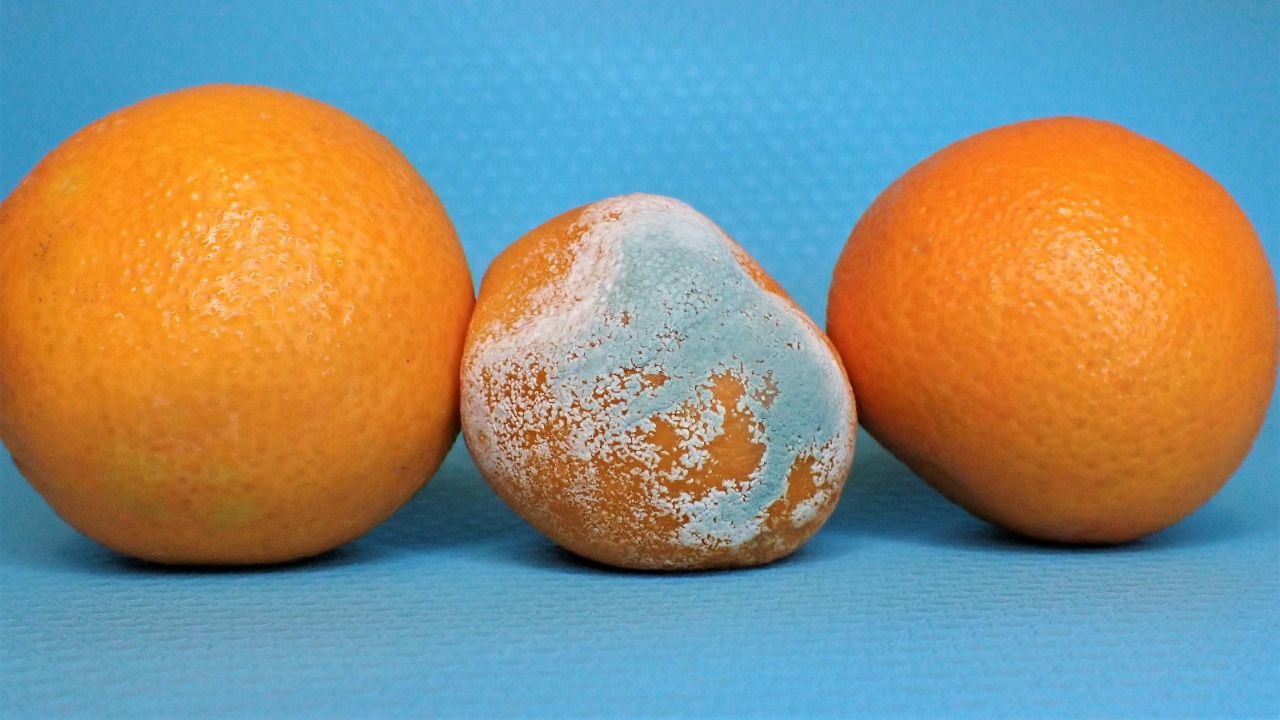
It’s a common belief that simply cutting off the visible mold from food like bread or cheese makes the rest safe to eat. However, food safety experts warn that this isn’t always the case. The invisible roots of mold can penetrate deeper into the food, potentially leading to health risks from mycotoxins. This misconception persists despite scientific evidence showing that not all molds are harmless, with some producing toxins that survive even after the visible mold is trimmed away.
The Science Behind Mold Growth on Food
Molds such as Penicillium and Aspergillus form microscopic hyphae, which are like tiny roots that spread invisibly into the surfaces of food. This makes complete removal of mold challenging, even after cutting away the visible spots. Environmental factors such as humidity and temperature can accelerate mold proliferation on items like fruits, dairy, and grains. This is why it’s not uncommon to find mold on these types of food, especially if they’ve been stored in warm, damp conditions.
Furthermore, the behavior of mold differs on soft versus hard foods. Soft foods have porous textures that allow mold to infiltrate deeper. This means that even if you cut away the visible mold, there’s a high chance that invisible mold spores have already spread throughout the food. According to food safety experts, this is why it’s generally safer to discard moldy soft foods rather than trying to salvage them.
Health Risks Associated with Eating Mold
Eating moldy food can lead to immediate symptoms like nausea, vomiting, and allergic reactions. These symptoms are caused by the ingestion of mold spores, which can irritate the digestive system and trigger an immune response. In addition to these immediate symptoms, there are also long-term dangers associated with eating moldy food. Some molds produce mycotoxins, which can cause liver damage and suppress the immune system. This is particularly concerning for vulnerable populations such as children or those with allergies.
There have been reported incidents where mold consumption led to foodborne illnesses. These cases emphasize the role of invisible toxins in causing health problems. Even if you can’t see the mold, the toxins it produces can still be present in the food and cause harm when ingested.
Why Cutting Off Mold Isn’t Always Safe
One of the reasons why cutting off mold isn’t always safe is because the mycotoxins produced by certain molds are heat-stable. This means that they remain in the food even after the visible mold has been trimmed away. Furthermore, the risks associated with eating moldy food can vary depending on the type of food. For example, soft fruits like strawberries pose higher dangers due to the rapid spread of mold compared to firmer items like carrots.
Health authorities provide guidelines on when visible mold indicates broader contamination beyond the surface. According to these guidelines, if mold is visible on the surface of food, it’s likely that it has already spread throughout the food. Therefore, it’s generally safer to discard the food rather than trying to salvage it by cutting away the mold.
Types of Foods Most Affected by Mold
Some types of food are more susceptible to mold growth than others. Bread and baked goods, for example, are high-risk categories. Mold can permeate the entire loaf quickly, making it unsafe to eat even if you cut away the visible mold. Dairy products such as cheese are also susceptible to mold growth. However, there are exceptions for aged varieties where surface mold is intentional. Even so, internal growth of mold still requires caution.
Produce like tomatoes and berries are also often affected by mold. In these cases, the presence of mold often signals spoilage from interactions with ethylene gas, a natural plant hormone that promotes ripening.
Expert Recommendations for Mold Prevention
There are several measures you can take to prevent mold growth on food. Food safety experts recommend storing food in the refrigerator and using airtight containers to inhibit mold development. It’s also important to inspect food for off odors or discoloration before consumption to avoid accidental ingestion of mold. If mold appears on porous foods, it’s safer to discard the entire item to prevent cross-contamination.
Safer Alternatives to Eating Moldy Food
Proactive measures can be taken to avoid eating moldy food. Prompt refrigeration of perishables and using mold-inhibiting wraps for items prone to spoilage can help prevent mold growth. In some cases, partial salvage of food is acceptable. For example, you can cut a wide margin around mold on dense foods like hard salami. However, it’s important to be aware that at-risk groups, including immunocompromised individuals, should avoid any potentially moldy items entirely.
Debunking Common Myths About Mold
Not all molds are beneficial. While the molds used in blue cheese are safe, wild molds that contaminate food can be harmful. Cooking does not necessarily eliminate the risks associated with mold. While heat can kill mold spores, the toxins produced by mold often persist even after cooking. The “one bite won’t hurt” attitude is also misguided. Repeated exposure to mold can lead to cumulative health risks. Therefore, it’s important to handle and store food properly to prevent mold growth.
More from MorningOverview